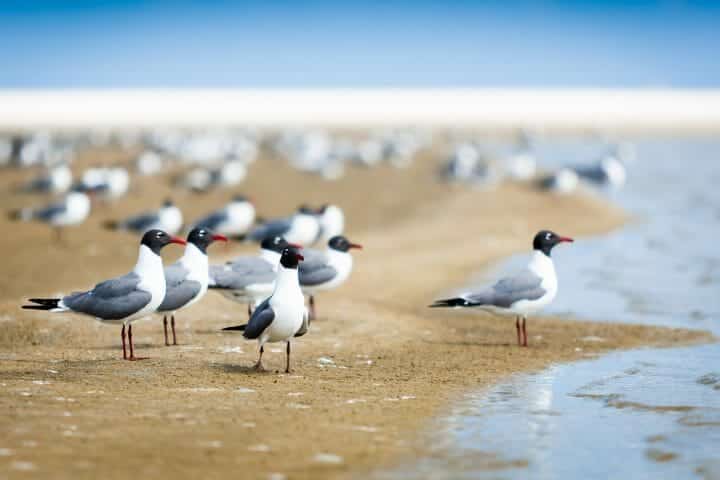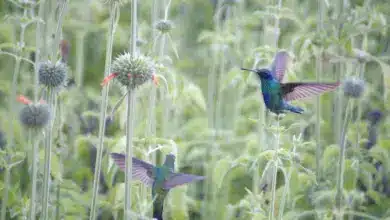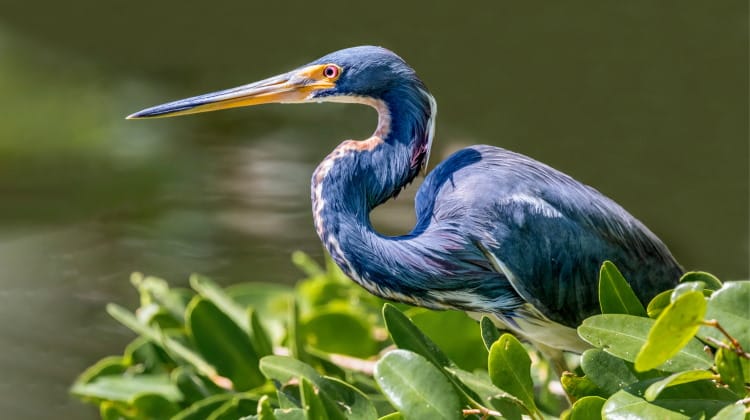Scientific Classification
Common Name: Green-winged Macaw
Kingdom: Animalia
Phylum: Chordata
Class: Aves
Order: Psittaciformes
Genus Species: Ara
Families can be found in every ethnicity: Psittacidae (true parrots)
The Red-and-Green Macaw is also known as Green-Winged Macaw. It is a large macaw that is mostly red.
It is the largest member of the Ara genus, and it can be found in forests and woodlands throughout northern and central South America. As with other macaws in the past, its population has declined due to habitat destruction and illegal captures for the parrot market.
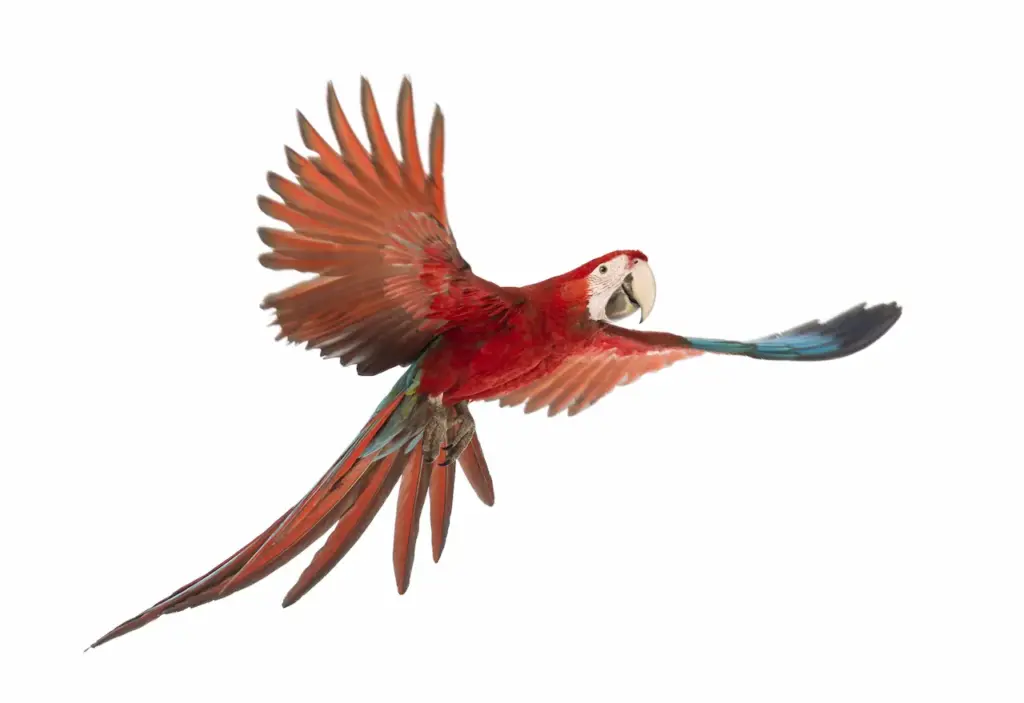
Green-Winged Macaw Appearance
One of the largest Macaw species, this magnificent parrot can be easily identified. The Green-winged Macaw is characterized by yellow eyes surrounded with bright red bars made of rows of feathers. These bars cover the white patch of skin. The chest, upper wing, upper back and head of the bird are all red. Grey is the color of the legs. The middle wing feathers are green, with blue tips. The tail is a mottled plumage surrounded by red and black feathers. The upper beak, which is horn colored, is black along the sides. The lower beak can be either black or dark gray.
Green-Winged Macaw Origin and History
It is found in many tropical lowland rainforests of Central and South America including Panama, Colombia and Venezuela, Ecuador and Guyana. Other countries include Brazil, Peru and Suriname. It inhabits the same area as the Blue-and-Gold Macaw.
Since the 17th century, green-wing macaws were kept in captivity. Captive breeding programs were very successful in the 19th century. It is easy to find green wing macaws that have been bred in captivity today. The natural habitat of this macaw has been severely depleted. Many are still being captured to be sold on the black market.
Green-Winged Macaw Temperament
The green-wing macaw is tame, affectionate and has a generally even-tempered disposition. The birds are friendly, but they need a few hours of your time every day. These birds can be taught to do tricks and speak.
They have one of the most powerful beaks of any parrot species. A green-winged macaw that has behavior issues can bite small children and their fingers. If you do not pay enough attention to your parrot or the rest of their flock, they will become aggressive.
Green-Winged Macaw Speech and Vocalizations
Green-wing macaws can be trained to speak 15 words, but are not well known for their ability to talk. This bird may screech or scream when it feels excited, is threatened, wants attention, etc. This bird is loud. This bird is not suitable for people who live in an flat, or any other small space.
If the bird is properly cared for, it will scream intermittently, loudly but not continuously. A green wing that is unhappy can create a ruckus and get someone kicked out of their apartment.
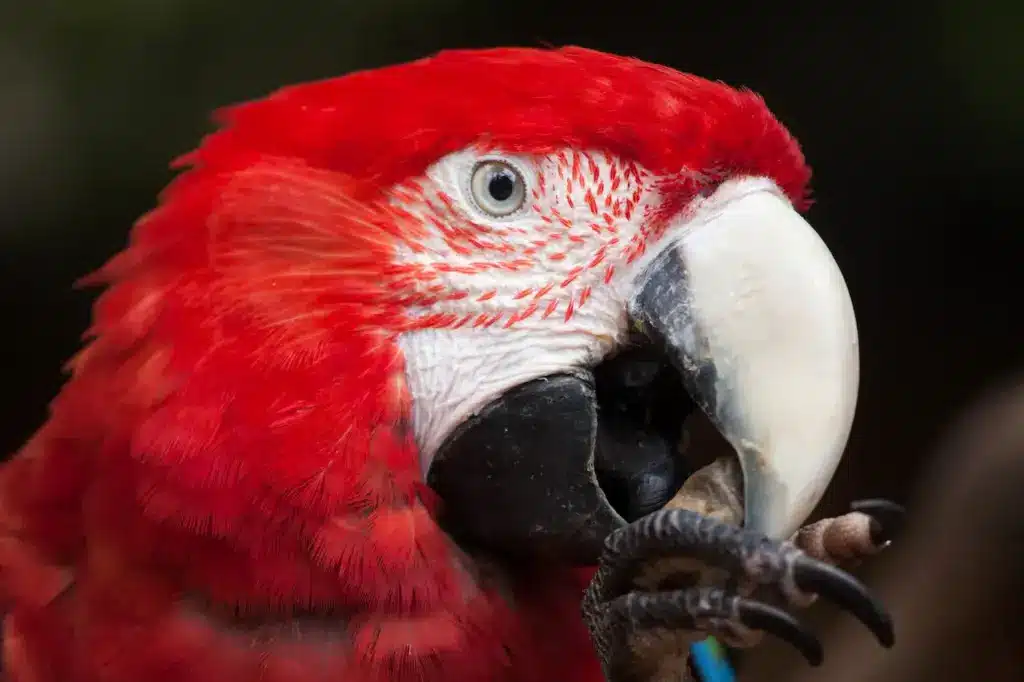
Green-Wing Macaw Markings and Colors
The green-winged macaw is easily recognizable among all the parrots. The head, breast, and shoulders of these bright birds are deep red with a greenish stripe below the shoulders. The dark blue wings transition from the green band to light blue at the rump.
The tail feathers have a blue tip on the red part. The legs and toes are deep gray. The beak has a horn color with a lower black mandible. Face eye patches are present. The males and females look the same, but males are slightly bigger. For a bird to be sexed, DNA testing is required or a surgical sexing.
Green-Wing Macaws: How to Care for them
Green-wing macaws are social birds and live in groups of 6 to 8 birds. Due to their social nature, green-wing macaws respond well to training. They must also be provided with adequate attention and bonding times. A macaw that is bored will be destructive.
Spend plenty of time with your bird. You become the “flock” of a green-winged macaw when you bring it into your home. Include him in all family activities.
A green-wing macaw needs a large cage, at least 2 1/2 feet wide by 3 feet high. Green-wings are a quieter species than other large macaws. However, they still make a lot of noise.
Install a sturdy perch inside the cage and be ready to replace it periodically if it becomes damaged. Above the perch, on the side, you should mount food, water and treat dishes. The branches within the cage will provide the bird with climbing exercise. Provide a range of toys to chew and play. It is a great idea to build a playpen at the top.
The macaws will do very well in an outdoor aviary when the weather is warm. It will also adapt to a room that is dedicated to a “bird room” indoors.
The cost of owning a large green-winged macaw can be high and requires constant care. Be prepared to spend a lot of money on this bird, including time, food, equipment, vet bills and home repairs.
Green-Wing Macaws Common health problems
Like other parrots, green-winged macaws are prone to self-mutilation/feather plucking, nutritional disorders, and a variety of diseases, including Proventricular Dilatation Disease (Macaw Wasting Syndrome), as well as overgrown beaks. Regular veterinary exams and a nutritionally balanced diet can keep your green-winged Macaw healthy.
Like other macaws species, green-wing macaws are susceptible to certain diseases including:
- Proventricular Dilation Disease: This virus causes neurological symptoms as well as intestinal problems. The disease is fatal and the best way to prevent it is to isolate the birds from other birds who may carry the virus.
- Psittacine Beak-and Feather Disease A disease caused by an circovirus that kills cells in the beak and feathers and compromises the immune systems. This disease is fatal, and it is best to prevent by ensuring that your bird is properly quarantined prior to purchase.
- Psittacosis This bacterial infection causes respiratory symptoms and eye discharge. Stressed out birds are more susceptible to the disease, but antibiotics administered promptly can cure it.
Allergies and behavioral problems such as feather plucking (which occurs when parrots are bored or frustrated) are also less serious problems.

Green-Wing Macaws Diet and nutrition
Green-winged macaws are wild birds that eat fruits, seeds, nuts, berries and berries. Also, they congregate on clay cliffs. Clay is rich in minerals and salts, which the birds eat to neutralize toxins.
Like all parrots that are kept as pets, green-wing macaws should be fed a commercial mix of high-quality seed and pellets in addition to fruits for birds and vegetables. Green-wing macaws are usually happy to be hand-fed during family meals. In the wild, green-wing macaws have been known to consume some protein. They will also eat cooked chicken in captivity.
Each macaw will consume, depending on the size of its body, between 1/2 and 3/4 cup parrot mix, and 1/2 to 3/4 cups of fruits and vegetables each day. It can be fed once in the early morning when it wakes up and again at dusk, before it goes to bed. Before going to bed, remove all food that has not been eaten.
Avocado, chocolate, coffee beans, and rhubarb are all toxic to parrots.
Want to learn more? Read: What should I feed my parrot
Green-Wing Macaws Exercise
Green-wing macaws need a lot of exercise to stimulate their mental and physical development. Daily, you will need to allow your bird to play outside the cage for 2 to 3 hours. For exercise periods, provide a separate structure for the playpen.
Keep an eye on your bird while it is out of its cage. The Green-wing Macaw is known to be a voracious chewer and can chew through expensive molding or door frames with lightning speed. It is important to invest in good quality chewing toys. You will need to replace them often, since macaws do not like these items.
The Good
- Friendly, affectionate, tame disposition
- Intelligent can speak up to 15-word sentences and be trained to do tricks
- Long-lived species
The Not So Good
- It can be noisy, so it is not suitable for apartments
- A large cage is required for one of the biggest parrots.
- A strong, powerful beak can bite young children.
Where to Buy or Adopt a Green Wing Macaw
You’ll have to find a breeder if you want to buy a green-winged macaw. You should only deal with a breeder that is reputable and can verify the status of your bird. This bird costs between $3,000 and $4,000.
The green-winged macaw requires a lot of care. Unfortunately, the green-wing macaw is often given up by animal adoption agencies or rescue organizations. You can find them at the following online adoption groups, rescue organizations, and breeders:
A bird that is alert and bright will be active. Avoid birds that are sitting still with puffy feathers. They could be sick. Scales on feet should be smooth. Be sure to check that its beak and nails are smooth and well-shaped. The nostrils of the bird should be clean and clear.
Interesting Facts
- Description
- The green-winged Macaw is an enormous parrot with a plumage that’s mostly red. Its name comes from the blue and green feathers on its wing and tail. The macaw’s face is white and striped with red feathers. The feet are zygodactylous, with 2 toes pointing forward and another 2 pointing backward.Size: Wingspan varies from 102 to 122.5 cm (41 to 49 in.) Wingspan: 102 to 122.5cm (41 to 50 in.).
- Weight: About 1250 to 1750 g (43.8-59.5 oz).
Diet: Feeding on fruits, seeds, leaves, salts and minerals along riverbanks
Incubation: Around 28 days
Clutch Size: Three eggs
Fledging Duration: 90-100 days
Sexual Maturity: Three to four years
Life span: From 60 to 80 Years
Range: South America is a large area of distribution
Habitat: Located in tropical rainforests and mangroves - Adult length: 90cm
Adult Weight: 1.2-1.4kilos - Status
- IUCN: Low Concern
Appendix II of the CITES Convention
USFWS Not listed
Fun Facts
- The hyacinth Macaw is the largest parrot.
- The macaws have the widest range of any species.
- Macaws have only one life-long mate.
- Due to their red coloration, they are often mistaken as scarlet macaws.
- Macaws are known to flock in the wild to “macaw-licks,” which are mountains of clay. These licks are rich in minerals and salts that are essential for the bird’s diet.
- Macaws can reach speeds up to 35 mph (56 kph).
Ecology and Conservation
Macaws can be messy eaters. Macaws have extremely strong beaks that are well-suited to eating seeds and nuts of all kinds, including Brazil nuts. Macaws, during their daily feedings, allow a lot of seeds to fall on the forest floor.
The pet industry also enjoys their popularity.
The green-winged Macaw has become extinct in parts of its range including Argentina.
The U.S. Wild Bird Act prohibits the commercial importation of any bird listed on CITES, including most parrots that are endangered or threatened.
Range Of Wild Animals
This occurs in the majority of northern South America except for the eastern region, and as far as Paraguay. It also affects eastern Panama, Central America.
The Green-winged Macaw’s range is still large but has decreased significantly.
The species is extinct in Argentina, and the south-eastern part of Brazil due to deforestation.
The Tambopata Candamo Reserved Zone, created in Peru in 1990, is a stronghold for this Macaw. It’s bordered by Bolivian borders. In 2003, I had the good fortune to visit this area.
The Clay Lick at Heath River in South America is one of best places to see the Green-wing. The lick is a bank of yellowish, clay-like material about 5m in height, with low vegetation and tall trees with white bark. Some of the branches on the trees were stripped, probably by Macaws who have visited over the years.
Green-winged Macaws are found in Central and South America. They range from Colombia and Venezuela to the Guianas and across western South America to Bolivia. Eastern South America includes Parana, Mato Grosso, and Formosa, all the way to Paraguay, and northern Argentina. These birds are found in tropical rainforests, lowlands and foothills. These birds are mostly found in the interior, and only rarely in coastal regions.
Habits and Lifestyle
The green-winged Macaw is a social bird. They live in pairs and also form family groups, or small flocks of 6-12 birds. These birds are sometimes seen in larger groups, mingling with other macaws at clay licks or feeding trees. They make a lot noise and each bird displays its entire vocal range. The Green-winged Macaw is nocturnal and spends most of its time in the rainforest where it feeds, socializes, and finds shelter. The macaws spend much time playing with each other and cleaning their feathers to remove lice and ticks. Three or four macaws are likely to be a couple and their young. They are very shy and can be hard to spot in the foliage. The bird will immediately fly off when it senses danger. It emits loud screeches.
Mating Habits
Mating Behavior: Monogamy
Reproduction Period: December
The period of Incubation: 28 Days
Independant Age: 3-4 Months
Female Name: hen
Male Name: Cock
Baby Name: Chick
Green-winged Macaws are monogamous. The pair mates only once and travels together, even after the breeding season. In December they nest in hollows of trees and breed. Incubation lasts 28 days. Usually 2-3 eggs are laid. The male regurgitates food from his throat pouch to the female while she is sitting on the nest. After the incubation, the eggs start hatching 1-5 days apart. Parents feed their chicks through regurgitation. The firstling must always be fed before the others. The parents will feed and care of the hatchlings for the first three to four months. Sexual maturity occurs at around 2-3 years of age.
The Population In the United States
Population Threats
The loss of habitat is a major threat to this species. Indigenous tribes hunt the bird for its motley feathers. This bird, along with other parrots species, has been captured to be sold as pets. CITES II protects this macaw, which prohibits its capture and trading. The Green-winged Macaw has now become extinct in parts of its original range, such as Argentina.
Population Number
According to the IUCN Red List the Green-winged Macaw has a total population of 50,000-499.999 mature individuals. Currently this species is listed as Least concern (LC) by the IUCN Red List, but its numbers are declining.
Ecological Niche
Green-winged Macaws are able to disperse seeds from a variety of fruits and thus sustain many different tree species.
Pet Potential
A Green-winged Macaw is a good companion for someone who is able to give it the same amount of time as they would give to a child. They should also have a big house, not be too proud to show off their house, and preferably, deaf.
These birds are large, noisy and destructive. The beak has a tremendous amount of strength. This bird is not suitable for those who are not familiar with large Parrots. The Green-wing Parrot has the second-largest beak after the Hyacinthine macaw.
A large Macaw must be handled by an owner. This means that if for any reason the bird needs to be restrained, it will know how to do so. This species can cause you to be hospitalized and even permanently disabled by a bite.
Fun Facts for Children
- This bird is only second in size to the Hyacinth Macaw.
- Their range is the largest of all macaws.
- Both species of macaw are predominantly red, making it easy to confuse them.
- The parrot has a powerful and strong bill that allows it to crack nuts with hard shells like Brazil nuts. The Green-winged Macaw’s beak can exert a force of up to 2000 pounds per square inch.
- The feet of these animals are characterized by “zygodactyls”, where the two middle toes are pointing forward, while the two outside toes are facing backward.
- The vocalizations are similar to those of Common Crows. They include cowing, shrieking and yelling.
- These parrots do not make good imitations. In fact, macaws in the wild do not mimic the calls of any other bird. Only captive macaws mimic human speech.

